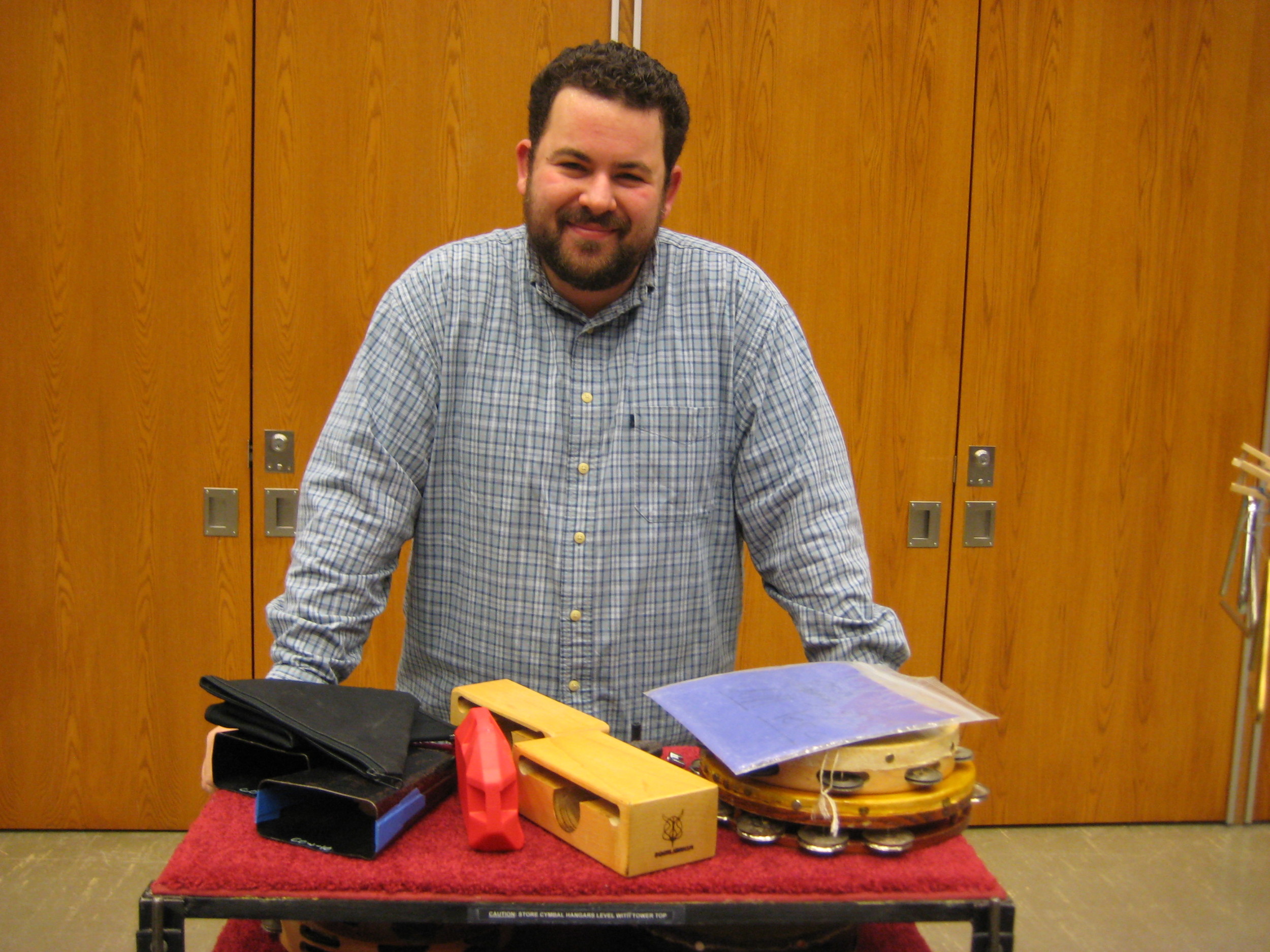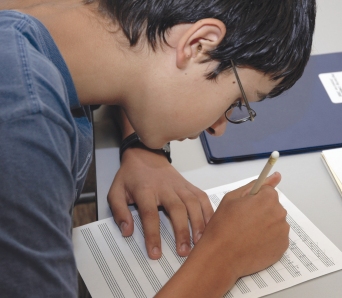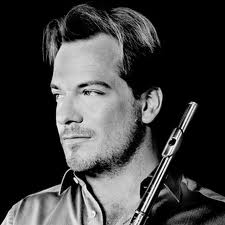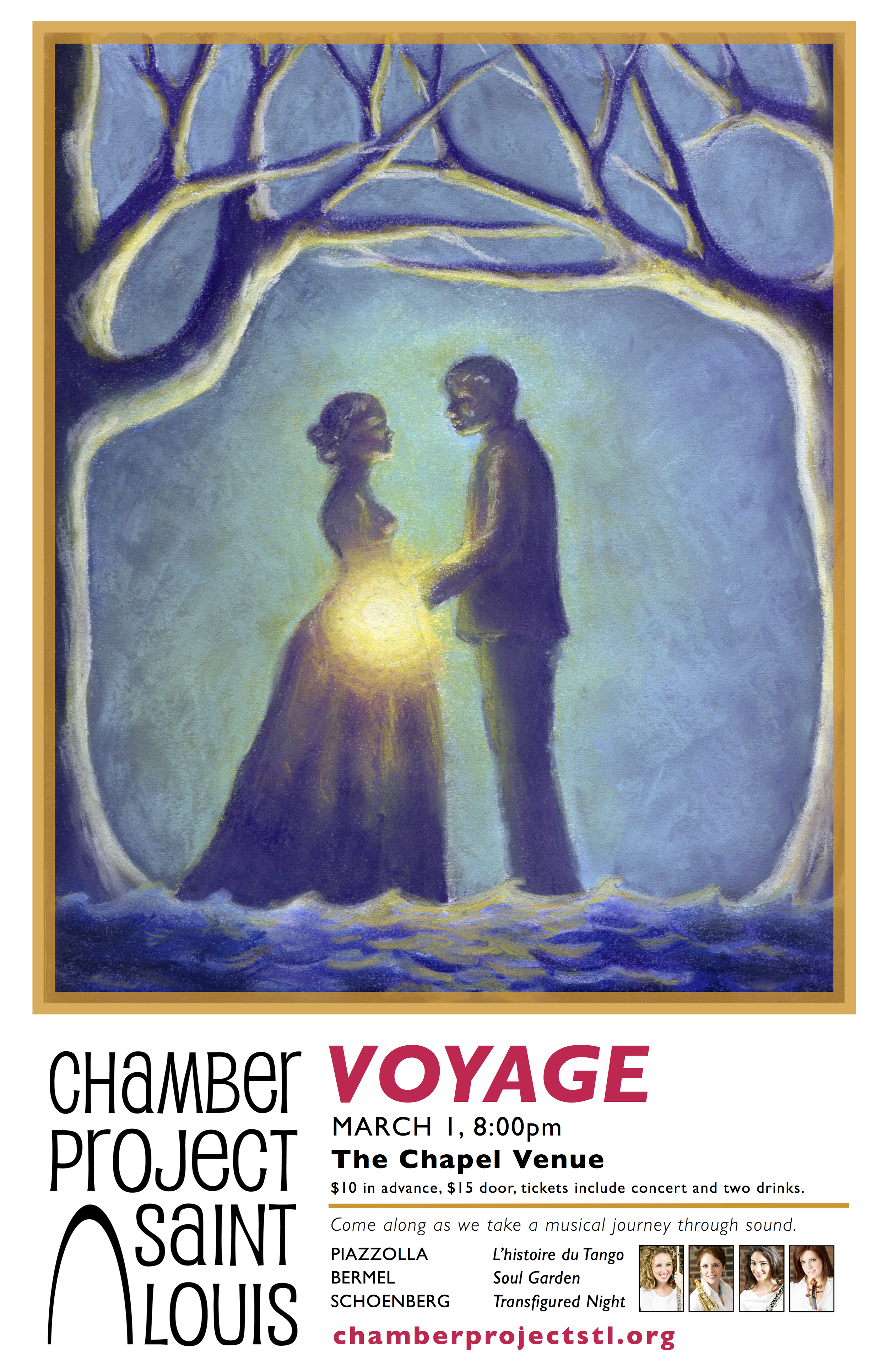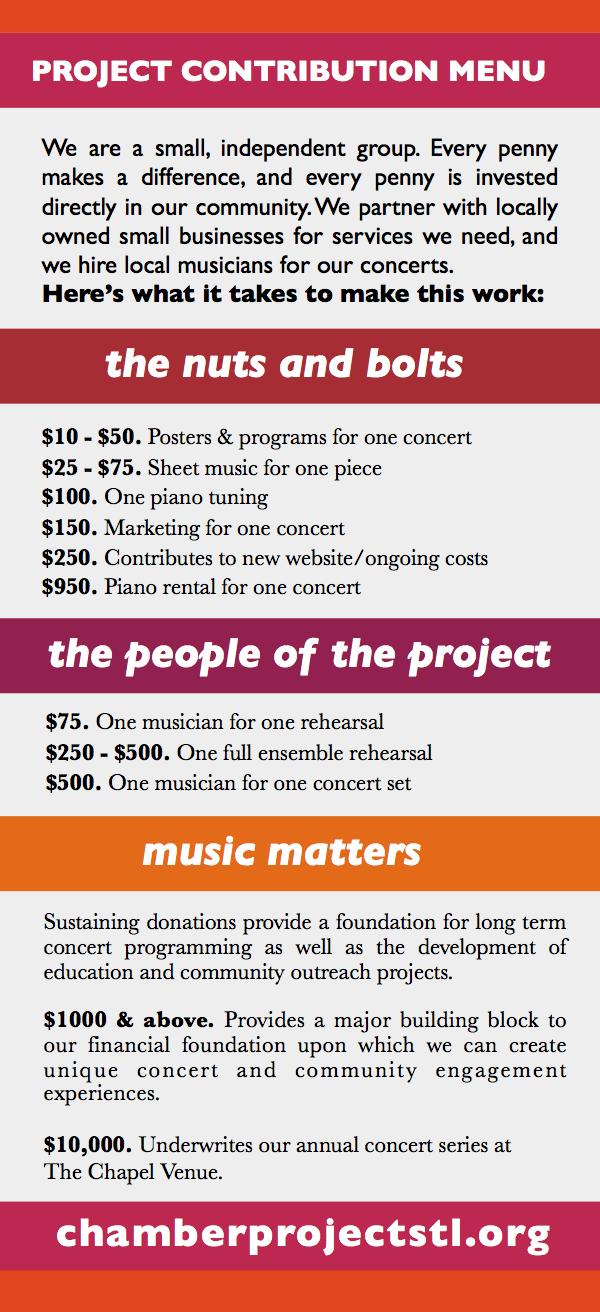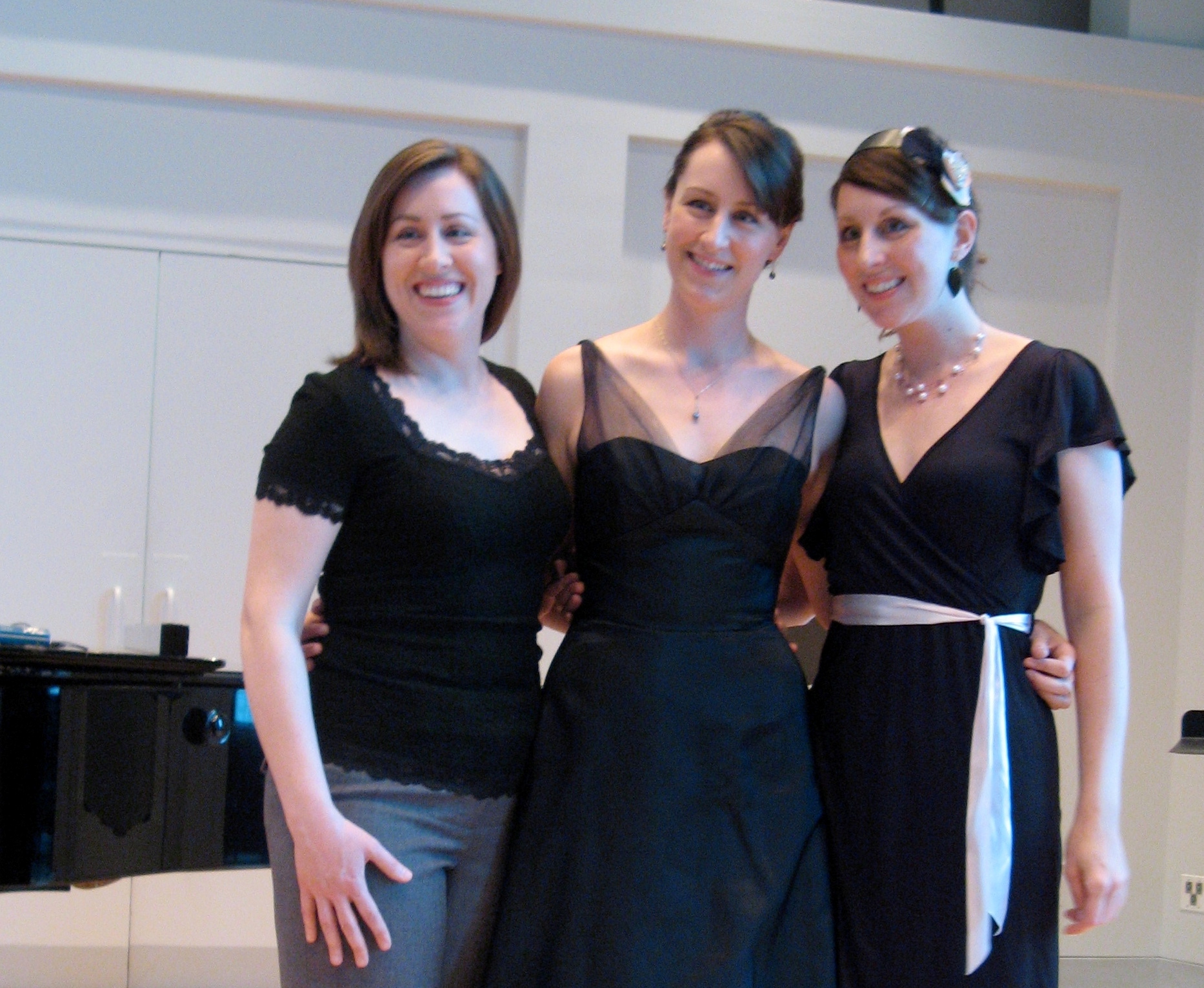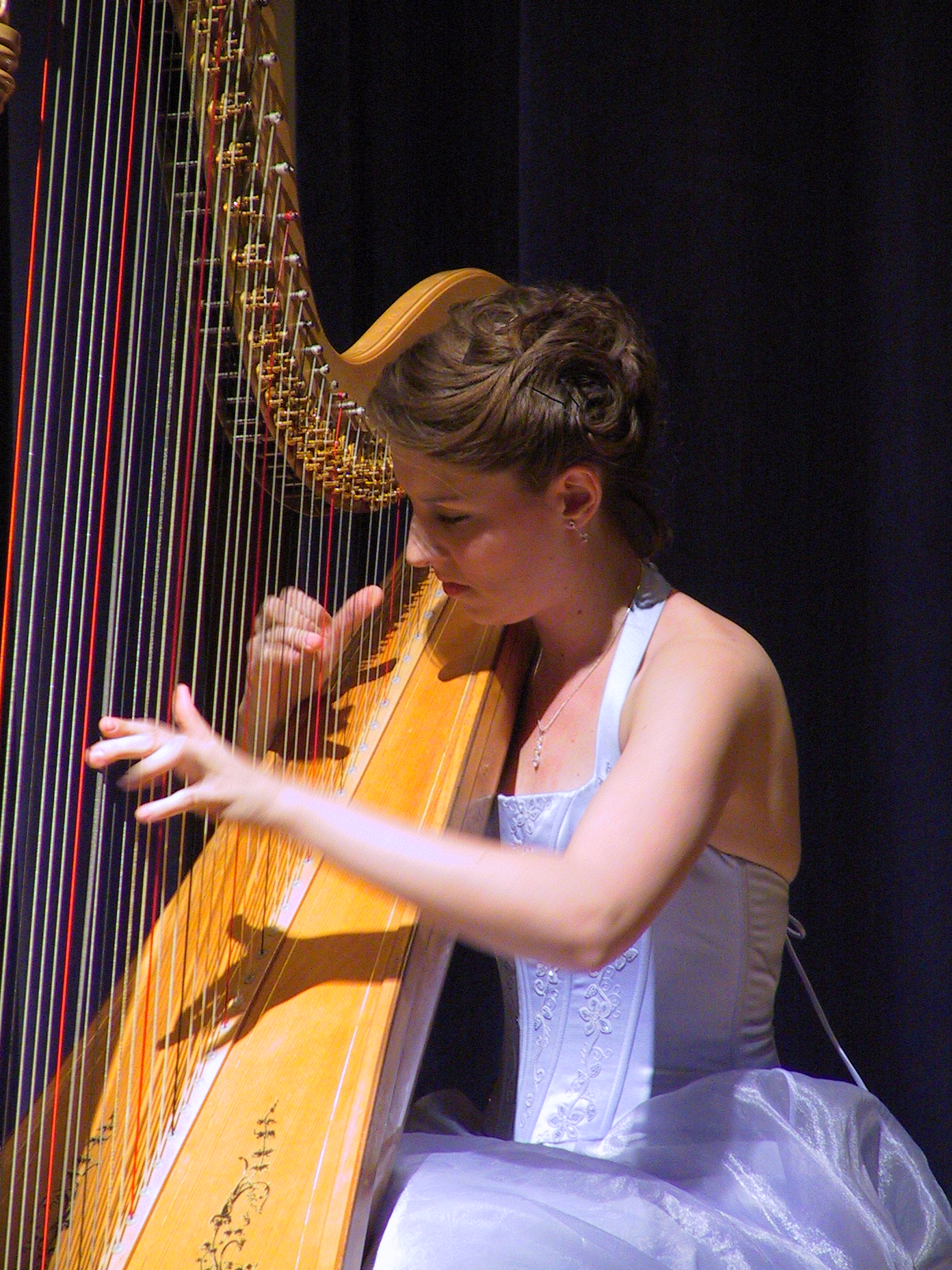Our upcoming concert is titled "VOYAGE" because all of the pieces start somewhere and end up somewhere different. We thought it would be fun to learn about Voyages our musicians have taken so we asked them to share. Eliana Haig (viola) will be making her debut with Chamber Project next week. She's new to Saint Louis so take a moment and get to know her and her story! We'll have a few more stories coming soon.
Hi! My name is Eliana and I am very excited to be playing viola on the Voyage concerts for Chamber Project! I am a Saint Louis newbie, having just moved here with my fiance, Alex, in August. I currently teach about 22 private students (and growing) and freelance throughout the region.

I decided on the viola in 3rd grade string orchestra through a process of elimination. I decided that 1) the violin was too high-pitched and annoying (upon working with many great violinists I have since changed my view) and 2) the cello was going to be a pain to carry around. The viola and I have been inseparable ever since. I love playing the middle voice and being in the center of the action.
I’ve been lucky that my viola playing has allowed me to enjoy many different parts of the world as well as many different musical experiences. I just moved to Saint Louis from Rochester, New York: I got my Master’s degree from the Eastman School of Music, then lived “downstate” (NYC area) for two years, then went back to Rochester, and now here. I grew up in Kentucky, but did my Bachelor’s degree in Wisconsin, so I’ve sort of lived a little bit of everywhere! My most interesting musical voyage, however, was the year I spent studying abroad in Austria.
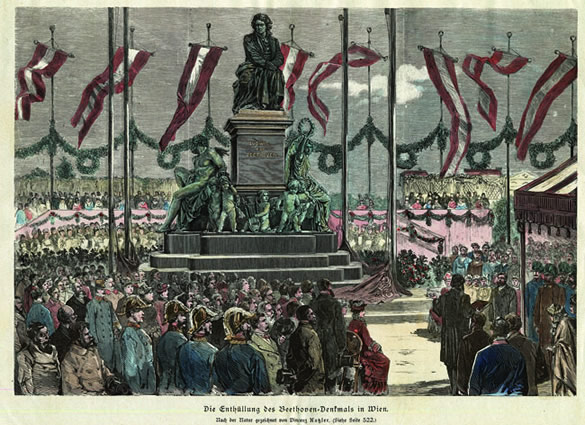
Like many American students, I did a study abroad program for a semester, and chose Vienna as my destination. To non-musicians this may seem a bit random. Why not London or Paris or Berlin? But Vienna is actually a musician’s dream destination. Most of the composers we know best lived there, including Beethoven, Mozart, Brahms, Schubert, and Schumann. Arnold Schoenberg, the composer of Verklärte Nacht [which is on the upcoming concert], was born in Vienna and lived and worked there before being forced to emigrate when the Nazi party rose to power. {click here to watch a short video about Schoenberg in Vienna} I got to visit Beethoven’s apartment, explore an entire museum devoted to Mahler, and see a Bruckner Symphony with the same orchestra and the same hall where it was premiered. During my semester in Vienna, I also took lessons with a fantastic viola teacher, from whom I learned so much that I decided to stay the rest of the year.
This teacher actually taught full-time at a school in Graz, a small city in the southern part of Austria, so I enrolled there. I learned conversational German, though much of it I have forgotten. I played a lot of concerts, and met many people from all over the world. Being far away from home with only a passable command of the language was exciting, fascinating, confusing, and lonely, often all in the same day! Since I often think in musical terms, the best way I can think to describing my experience is that it was like learning a completely new piece of music for the first time.
Beginning to rehearse a new piece, while fun and exciting, is often disorienting. Even if I have listened to the piece with the score, hearing my part combined with the others for the first time feels like information overload. Especially when I’m preparing to perform piece of contemporary music, it takes a while to try to understand the “musical language” of the composer. Why do they want it to get louder there? What emotional or coloristic effect is he or she going for? Sometimes a new piece seems so “foreign” that I’m not even sure if certain markings in the score are clerical errors or intentional musical instructions. But much like the thrill of travelling, I love playing new music because it stretches me intellectually and forces me to try new ways of doing things - all in real time and while responding to the other musicians. That’s why live music is so much fun!
Much like a composer’s notes in the score, symbolic instructions can get lost in translation. This ambiguous sign, which I saw outside of public transit station in Graz, Austria, says “uneven surfaces”.
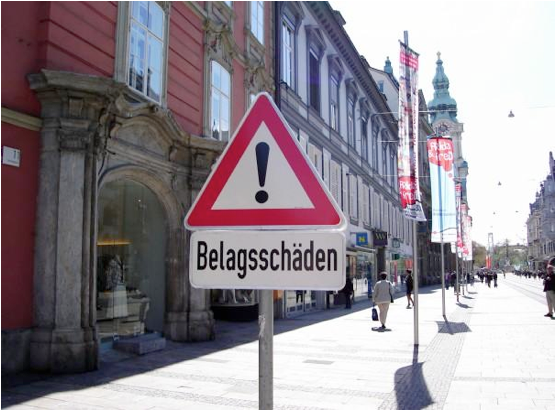
Be sure to say hi to Eliana at one of our upcoming concerts!
FEB 22, 7:00pm at The Saint Louis Art Museum Art After 5 series.Call 314-721-0072 to reserve your free tickets.
MARCH 1, 8:00pm at The Chapel Venue. $10 in advance, $15 at the door.
Includes 2 drinks. Click here for advance ticket purchase.
Full Program
PIAZZOLLA L’histoire du Tango
BERMEL Soul Garden
SCHOENBERG Transfigured Night



